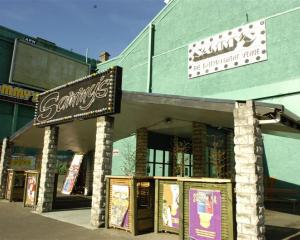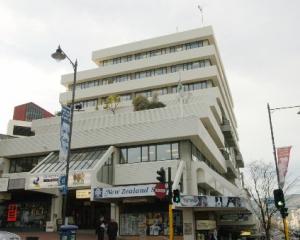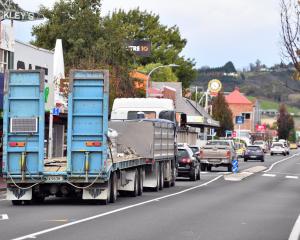Being in public ownership, the Hereweka Block (from Harbour Cone to Peggy's Hill) can now give Dunedinites a chance to honour our recent rural past, understand our landscapes and help pioneer a truly sustainable future.
An experiment aiming to do these three things will be possible if the 328ha is divided into three comparable areas, or if two similar blocks are added to the Dunedin City Council's holding and if the three units are managed in the following ways.
Manage Unit 1 in the manner proposed by the council's Hereweka Steering Group, i.e.
"To maintain a working landscape and enhance landscape, ecological, recreation, cultural and heritage values of the Hereweka/Harbour Cone site through the integration of development and conservation consistent with sustainable land management practices."
This was discussed at a public meeting in Portobello on March 3 in relation to the draft council Management Plan and submissions are due by Monday.
From all accounts, this plan, following public input, is likely to maintain Hereweka's rural "Millennium" look, even as the world changes around it.
Fence Unit 2 without subdivisions, remove all stock, cease using any tracks, control only the most noxious weeds and controllable pests and otherwise leave its fate to benign nature.
Many benefits will arise as soils and flora recover, including better water and nutrient retention.
As a boost to help nature regain control, distribute seed balls of poroporo (Solanum laciniatum).
These plants create ideal tree nursery conditions, and birds coming to feed on their berries will bring many species of tree seeds to rapidly develop a diverse and resilient ecosystem, rather than a vulnerable plantation.
Treat Unit 3 as for Unit 2, except where patches can be intensively, yet sensitively, managed without use of agrochemicals, or drainage (as such), and so on.
Encourage high-quality subsistence landscape management by small communities living in sophisticated, sustainable housing clusters.
Good returns can be anticipated for plant growth as soils rapidly improve and deepen overall.
These futuristic communities will interact with the Peninsula and Dunedin populace, for example in supplying farmers' markets.
The rationale for the above experiment is to compare treatments.
Relative to Unit 1, Unit 2 will exemplify the features of the ecology that have been in need of revival, and Unit 3 will help us understand the gentle integration of human influences into this revitalised environment.
The expectation is that for several pressing reasons such low-impact land management can become a desirable lifestyle for some families, even in New Zealand, although more so elsewhere.
The Hereweka Block contains a snapshot of the recent history of rural Otago and of community ideas of natural beauty.
But there has been a progression to grossly modified land, which, as elsewhere in New Zealand, is becoming degraded due to soil-destroying, intensive, ultra-efficient management.
Few industries, economies or countries have the freedom and ability to buck environmentally destructive trends.
Where people are starving or in poverty, communities cannot risk trying even promising new agricultural systems.
As with home gardening and farmers' markets, new ways forward are best trialled and fine-tuned first at a local level.
Some fortunate communities in New Zealand might have this luxury.
We could start this experiment on Otago Peninsula without penalising anyone.
Why should we? Because of the future.
Paying a multimillion-dollar price tag for a farm, or committing to a big infrastructure project may show that a few people have faith in a future controlled by economic growth, but such acts should not inspire confidence in the future for the world food supply.
More people might sleep better knowing that trials are under way that could demonstrate local sustainability and environmental resilience.
We would love to attract visitors from far and wide to show them a truly sustainable future that they might adapt to their conditions.
They could share our joy in seeing that Hereweka is iconic and inspirational, as the Otago Peninsula Artists' exhibition "Almost an Island" demonstrates at Macandrew Bay until Sunday.












